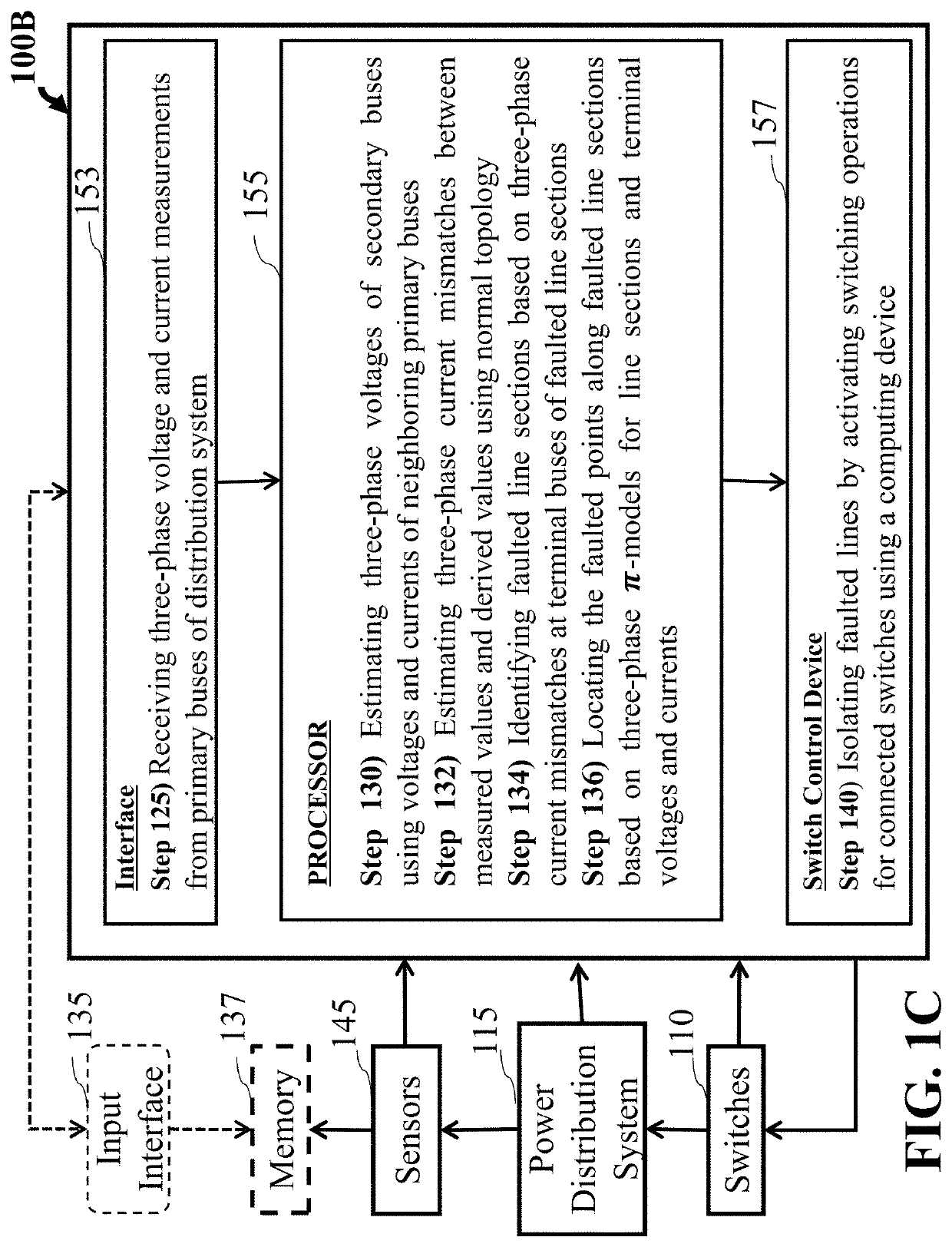Simultaneous Fault Detection and Location of Power Distribution Systems
a power distribution system and simultaneous technology, applied in the field of electric power systems, can solve the problems of increasing the cost of electricity generation, the burden on electric utilities to make the most of the existing power system, and the complexity of fault detection and location in the distribution system than in the transmission system, so as to reduce the use of the central processing unit (cpu) in the system and power consumption, and the effect of quick detection of faults in the power distribution system
- Summary
- Abstract
- Description
- Claims
- Application Information
AI Technical Summary
Benefits of technology
Problems solved by technology
Method used
Image
Examples
example
[0137]FIG. 7 is a 36-bus sample system with a 4.8 kV operating voltage. It shows the one-line diagram for the sample system. The system includes a swing generator 717, denoted Gen, is attached to bus 799, a PQ distributed generator, denoted DG 1, 757A is attached to bus 731, and a PV distributed generator, denoted DG 2, 757B is attached to bus 706. The entire network is ungrounded, as all loads 777 are ungrounded, and all generators 717, 757A and 757B are connected with transformers or voltage regulators from the network using Wye / Delta connection, 767. All line sections 747 are of three-phase.
[0138]The first example simulates two ground faults occurred at different times. The first fault is a phase a to ground fault occurred at section 744-727 at point 0.1500 (denoted x) at time 0.1 s, and the second fault is a phase b to ground fault occurred at section 711-740 at point 0.6000 (denoted y) at time 0.2 s. All buses 744, 727, 711 and 740 are equipped with current and voltage measurin...
PUM
 Login to View More
Login to View More Abstract
Description
Claims
Application Information
 Login to View More
Login to View More - R&D
- Intellectual Property
- Life Sciences
- Materials
- Tech Scout
- Unparalleled Data Quality
- Higher Quality Content
- 60% Fewer Hallucinations
Browse by: Latest US Patents, China's latest patents, Technical Efficacy Thesaurus, Application Domain, Technology Topic, Popular Technical Reports.
© 2025 PatSnap. All rights reserved.Legal|Privacy policy|Modern Slavery Act Transparency Statement|Sitemap|About US| Contact US: help@patsnap.com



